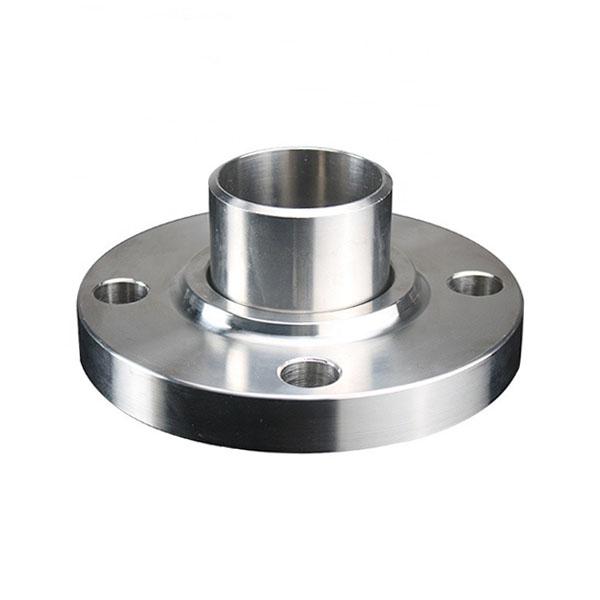Flanges are essential components in piping systems, used to connect pipes, valves, pumps, and other equipment. They provide easy access for cleaning, inspection, or modification.

1. Weld Neck Flange (WN)
• Description: Features a long tapered hub for reinforcement and smooth stress distribution.
• Applications: High-pressure and high-temperature systems (e.g., oil & gas, petrochemical).
• Advantages: Strong, durable, and resistant to dishing.

2. Slip-On Flange (SO)
• Description: Slides over the pipe and is welded on both the inside and outside.
• Applications: Low-pressure systems where alignment is critical.
• Advantages: Easy installation, cost-effective.

3. Blind Flange (BL)
• Description: A solid disc used to seal the end of a piping system.
• Applications: Pressure testing, pipeline termination.
• Advantages: Prevents flow, allows future expansion.

4. Socket Weld Flange (SW)
• Description: Pipe is inserted into the flange’s socket and fillet-welded.
• Applications: Small-diameter, high-pressure piping.
• Advantages: Smooth flow, minimal leakage risk.

5. Threaded Flange (TH)
• Description: Internal threads allow attachment without welding.
• Applications: Low-pressure, non-critical systems (e.g., water, air).
• Advantages: Easy assembly/disassembly.

6. Lap Joint Flange (LJ)
• Description: Used with a stub end; the flange rotates freely for alignment.
• Applications: Systems requiring frequent dismantling.
• Advantages: Cost-saving, adjustable.

7. Orifice Flange
• Description: Designed for flow measurement with orifice plates.
• Applications: Oil, gas, and chemical industries.
• Advantages: Accurate flow control.

8. Reducing Flange
• Description: Connects pipes of different diameters.
• Applications: Space-constrained systems.
• Advantages: Eliminates the need for a separate reducer.

9. Flat Face Flange (FF)
Description: Features a flat sealing surface, typically used with full-face gaskets.
Applications: Low-pressure systems, cast iron pipes, and non-critical connections.
Advantages: Simple design, cost-effective, easy to install.
Conclusion:
Choosing the right flange depends on pressure, temperature, material, and system requirements. Each type offers unique benefits—whether for high-strength welding (Weld Neck), quick assembly (Threaded), or flow measurement (Orifice).
For more details, consult industry standards like ASME B16.5 or API 6A.
Would you like additional details on flange materials or gasket compatibility? Let us know!

 Por favor verifique seu email!
Por favor verifique seu email! Por favor verifique seu email!
Por favor verifique seu email!  Por favor verifique seu email!
Por favor verifique seu email! Por favor verifique seu email!
Por favor verifique seu email! 

